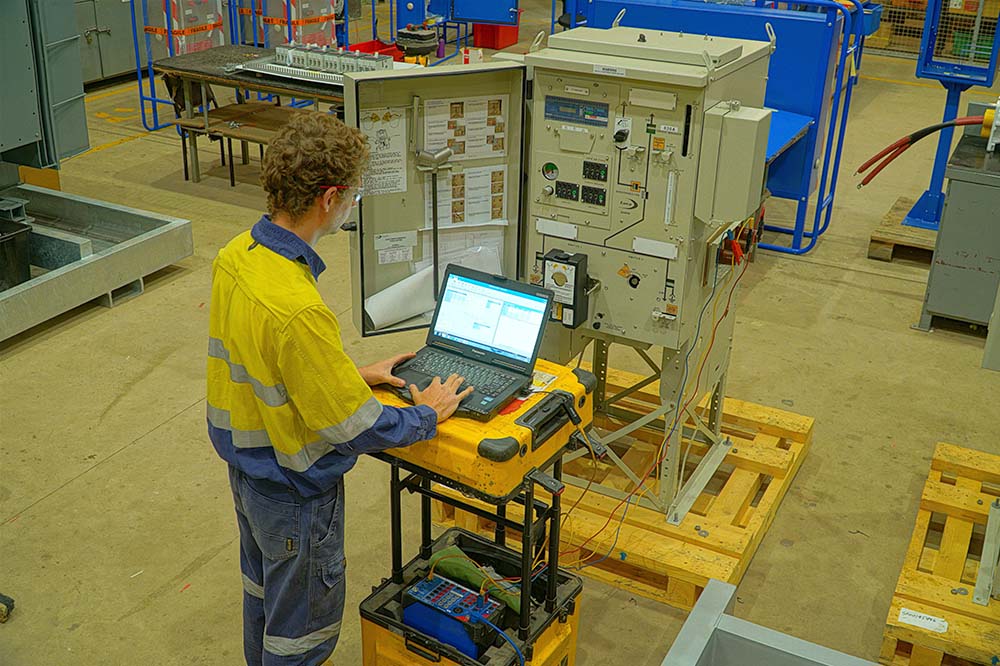High voltage (HV) commissioning ensures electrical systems operate safely, reliably, and in compliance with Australian regulations. From substations to switchgear and protection systems, the commissioning process safeguards both assets and personnel. Here’s a step‑by‑step guide on best practices for HV Testing and commissioning Australia, incorporating generic keywords like electrical testing, commissioning plan, substation commissioning, and HV safety.
1. Planning & Documentation
Start by developing a detailed HV commissioning plan that outlines:
- Scope of work (equipment types: switchgear, transformers, relays)
- Required tests and procedures
- Roles and responsibilities
- Safety protocols and risk assessments
For embedded generation or network-connected plant, a formal commissioning plan must be submitted to the relevant Distribution Network Service Provider (DNSP), often requiring approval before commissioning begins.
2. Pre‑Commissioning Tests
Before energisation, conduct thorough pre‑commissioning inspections and test routines such as:
- Visual checks (connections, terminations, busbars)
- Primary insulation checks, CT/PT verification, and continuity tests
- Power quality baseline measurements with the plant offline
- Protection system logic and communication testing
These tests help confirm installation integrity and prepare for full commissioning. For generators, compliance tests should include background measurements and protection functionality checks before connecting to the network.
3. Notifications & Coordination
Australian regulations often require advance notification to network operators. For example, CitiPower/Powercor mandates:
- Notice of commissioning date at least 10 business days in advance
- Submission of test plans, pre‑test simulations, and voltage variation data
- Coordination with control rooms and engineers
- Defined contact and escalation procedures during test days
Proper coordination avoids network disturbances and ensures network operators like AEMO/DNSP oversight where required.
4. On‑Site HV Commissioning
Once pre‑tests are complete and approvals secured, proceed with on‑site commissioning:
- Energisation in controlled stages
- Testing of circuit breakers, bus insulation, contact resistance, and timing performance
- Partial discharge (PD) measurements on installed switchgear and cables to detect latent insulation defects
- Functional tests of all electrical and control systems—including SCADA integration and relay coordination.
MPI standards require that factory (routine) test results of switchgear and other HV equipment be verified on-site post-erection
5. Protection Drive & Logic Testing
Protection relays are critical for network safety. Commissioning best practice requires:
- Secondary injection testing of relays to validate tripping thresholds and timing
- Verification of relay configuration against coordination studies
- Trip circuit integrity and interlock tests
- End‑to‑end functional checks—ensuring relays communicate and operate correctly under fault simulation scenarios
6. Earthing & Grounding Checks
A solid earthing system is essential for safety and fault performance. Ensure:
- Correct earthing arrangements per AS/NZS 3000 and AS 2067 standards
- Earth grid resistance and continuity testing
- Proper bonding of infrastructure and water pipes per MEN and earthing protocols
Fault currents must be reliably diverted, and earth electrodes verified to maintain protective operation.
7. Compliance & Acceptance Reports
Following test completion, prepare a compliance report package including:
- Final test data
- Completed commissioning checklist
- Comparison of factory acceptance tests (FAT) vs site acceptance tests (SAT)
- Confirmatory overlays with simulation models (e.g., PSS®E or PSCAD) for generators
- SCADA and communications verification data
Submit these to network providers or regulators. Only after acceptance can energisation and operation proceed to approval.
8. Handover & Ongoing Monitoring
Upon acceptance:
- Hand over operations, maintenance, and safety procedures to the asset owner
- Provide documented commissioning certificate, as‑installed settings, and equipment data
- Set up periodic maintenance schedules and condition monitoring (e.g., partial discharge tracking, thermal scans) to support reliability and predictive asset management
9. Regulatory & Safety Compliance
Throughout the process, ensure adherence to relevant standards, including:
- AS 2067: Substations and HV installations exceeding 1 kV AC
- AS/NZS 3000: Electrical Installations (Wiring Rules)
- Work health and safety legislation (e.g., WHS Act, Electrical Licensing Regulations)
- Network operator-specific policies (e.g., TasNetworks, Western Power) for documentation and testing protocols
Summary Table of Key Steps
| Step | Description |
| Planning & Documentation | Develop a test plan, risk assessment, and roles |
| Pre‑Commissioning Testing | Inspections, base measurements, relay tests |
| Notifications | Inform network operators, submit documentation |
| On‑site Commissioning | Energise, breaker timing, PD, insulation tests |
| Protection Testing | Secondary injection, logic, interlock, SCADA |
| Earthing Checks | Soil resistance, grid, and bonding per standards |
| Compliance Reporting | Submit signed-off results and test reports |
| Handover & Monitoring | Maintenance plan and condition monitoring |
| Regulatory Compliance | Follow AS/NZS and safety legislation |
Final Thoughts
HV commissioning in Australia is a multi-stage, standards-driven process designed to deliver safe, reliable, and compliant electrical installations. By following best practices—from careful planning to detailed testing, documentation, and regulatory coordination—companies ensure asset integrity and operational continuity.
If you’re looking for expert HV testing and commissioning services, substation commissioning, or electrical safety compliance support, MPT Services can assist with tailored solutions across all stages. Contact us today to streamline your next high‑voltage project.

